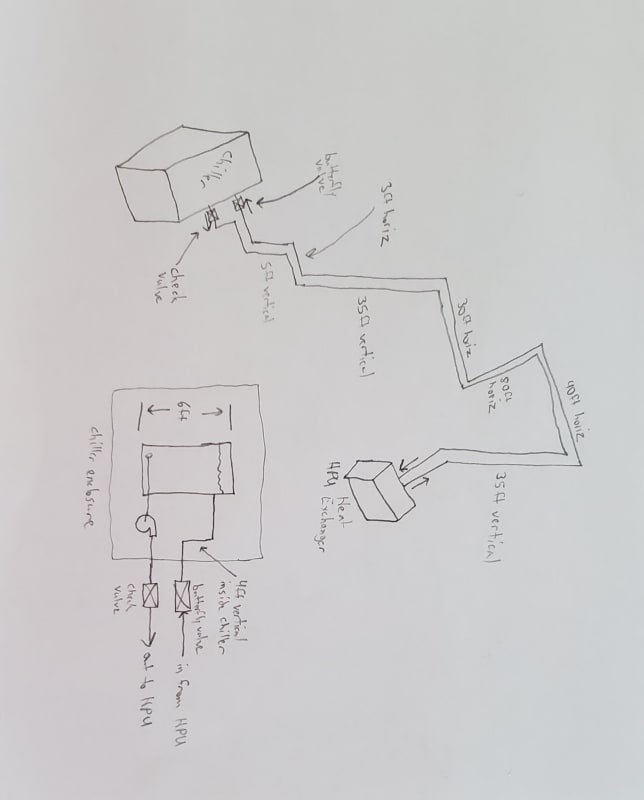Sparky4598
Mechanical
I am struggling to figure out if a closed loop pipe system could drain all or even some of the fluid out of the pipe back into the reservoir after the pump shuts off.
Fluid is 50/50 propolene glycol / water. The system is a chiller fluid system. The reservoir is a vented tank. The pump pulls fluid from the tank, up 40ft vertically and into the building, horizontally about 150ft, down 35ft to a sealed heat exchanger, and back up and out to the tank outside the building. So the inlet and outlet of the pipe system is at the same elevation.
I originally thought there is no way it could drain out as long as no air is in the pipe or enters the pipe some way. But then I thought could the weight of the fluid cause enough of a pressure drop at the top of the pipe to cause the fluid to boil and allow some of it to drain back and overflow the tank after the pump is turned off. EDIT: There is 1 butterfly valve and 1 check valve that closes when the pump turns off.
If I left out any details necessary, I Apologize. Just let me know and I can add any info necessary. Thanks!
Fluid is 50/50 propolene glycol / water. The system is a chiller fluid system. The reservoir is a vented tank. The pump pulls fluid from the tank, up 40ft vertically and into the building, horizontally about 150ft, down 35ft to a sealed heat exchanger, and back up and out to the tank outside the building. So the inlet and outlet of the pipe system is at the same elevation.
I originally thought there is no way it could drain out as long as no air is in the pipe or enters the pipe some way. But then I thought could the weight of the fluid cause enough of a pressure drop at the top of the pipe to cause the fluid to boil and allow some of it to drain back and overflow the tank after the pump is turned off. EDIT: There is 1 butterfly valve and 1 check valve that closes when the pump turns off.
If I left out any details necessary, I Apologize. Just let me know and I can add any info necessary. Thanks!

